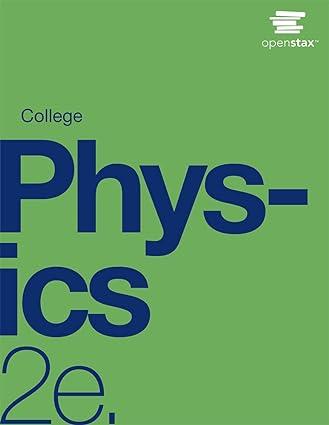A 14-gauge copper wire has a diameter of 1.628 mm. What magnitude current flows when the drift
Question:
A 14-gauge copper wire has a diameter of 1.628 mm. What magnitude current flows when the drift velocity is 1.00 mm/s? (See above example on Example 20.3 for useful information.)
Data given in Example 20.3
Calculate the drift velocity of electrons in a 12-gauge copper wire (which has a diameter of 2.053 mm) carrying a 20.0-A current, given that there is one free electron per copper atom. (Household wiring often contains 12-gauge copper wire, and the maximum current allowed in such wire is usually 20 A.) The density of copper is 8.80 × 103 kg/m3.
Strategy
We can calculate the drift velocity using the equation I = nqAvd. The current I = 20.0 A is given, and q=-1.60 x 10-19 C is the charge of an electron. We can calculate the area of a cross-section of the wire using the formula A = πr2, where is one-half the given diameter, 2.053 mm. We are given the density of copper, 8.80 × 103 kg/m3, and the periodic table shows that the atomic mass of copper is 63.54 g/mol. We can use these two quantities along with Avogadro's number, 6.02 x 1023 atoms/mol, to determine n, the number of free electrons per cubic meter.
Step by Step Answer:






